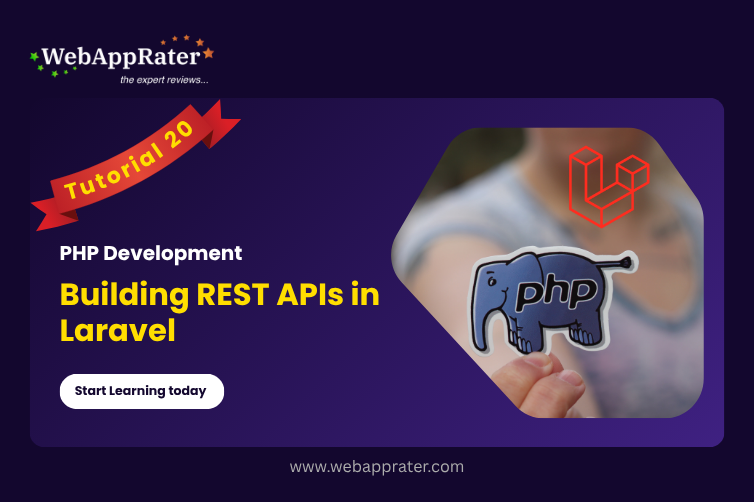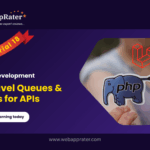Introduction
APIs are the backbone of modern applications—powering SPAs, mobile apps, and third-party integrations. Laravel is one of the best frameworks for building REST APIs, thanks to its elegant routing, Eloquent ORM, middleware, and authentication tools.
To build scalable, secure, and developer-friendly APIs, you need to follow best practices. For interviews, this topic often tests your ability to design APIs that are not only functional but also reliable and maintainable.
1. Use Proper Naming Conventions
Use plural nouns for resources:
- ✅
/api/users - ❌
/api/getAllUsers
Use nested routes for relationships:
GET /api/users/1/posts
Stick to RESTful verbs:
- GET /api/users → list users
- POST /api/users → create user
- PUT /api/users/1 → update user
- DELETE /api/users/1 → delete user
2. Return Consistent JSON Responses
Instead of raw models, use API Resources:
class UserResource extends JsonResource {
public function toArray($request) {
return [
'id' => $this->id,
'name' => $this->name,
'email' => $this->email,
];
}
}
// Controller
return UserResource::collection(User::paginate(10));
👉 Provides clean and predictable output.
3. Implement Pagination
return User::paginate(10);
👉 Response includes meta info like total, per_page, next_page_url.
4. Validate All Inputs
public function store(Request $request) {
$validated = $request->validate([
'name' => 'required|string|max:50',
'email' => 'required|email|unique:users',
]);
return User::create($validated);
}
👉 For APIs, failed validation returns JSON error responses automatically.
5. Use Authentication & Authorization
For SPAs & mobile apps, use Sanctum. For third-party apps, use Passport (OAuth2).
Route::middleware('auth:sanctum')->get('/profile', function (Request $request) {
return $request->user();
});
6. Implement Rate Limiting
Route::middleware('throttle:60,1')->group(function () {
Route::get('/users', [UserController::class, 'index']);
});
👉 Limits to 60 requests per minute per IP.
7. Version Your APIs
Route::prefix('v1')->group(function () {
Route::get('/users', [V1\UserController::class, 'index']);
});
Route::prefix('v2')->group(function () {
Route::get('/users', [V2\UserController::class, 'index']);
});
8. Handle Errors Gracefully
Always return meaningful error codes:
- 200 OK → success
- 201 Created → resource created
- 400 Bad Request → invalid input
- 401 Unauthorized → invalid token
- 403 Forbidden → no permission
- 404 Not Found → resource doesn’t exist
- 500 Internal Server Error → unexpected error
👉 Use Laravel’s exception handler (App\Exceptions\Handler).
9. Secure Sensitive Data
- Never expose raw passwords or tokens.
- Always hash passwords with
Hash::make(). - Use HTTPS for all API requests.
- Set CORS rules properly for cross-origin requests.
10. Document Your API
Use Swagger/OpenAPI or Laravel API Doc packages to document endpoints. Helps developers consume your API easily and reduces onboarding time for new team members.
Common Beginner Mistakes
- Returning raw Eloquent models (leaks unwanted fields).
- Not using pagination → slow APIs.
- Forgetting to secure routes with middleware.
- Hardcoding URLs instead of using named routes.
- Ignoring versioning → breaks clients when APIs change.
Sample Interview Questions & Answers
Q: How do you ensure consistent responses in Laravel APIs?
A: Use API Resources to structure JSON responses.
Q: What’s the difference between Sanctum and Passport?
A: Sanctum is for SPAs and mobile apps (simple tokens). Passport is full OAuth2 for external apps.
Q: How do you handle large datasets in APIs?
A: Use pagination (paginate() or cursorPaginate()).
Q: Why is versioning important in APIs?
A: To maintain backward compatibility when new changes are introduced.
Q: How do you implement rate limiting in Laravel?
A: Use the throttle middleware (throttle:60,1).
Q: What’s the best way to handle validation errors in an API?
A: Laravel automatically returns JSON with error messages and 422 status code.
Mini Project Idea
👉 Build a Task Management API following best practices:
- Endpoints:
/tasks(CRUD). - Use Resources for responses.
- Add Sanctum authentication.
- Include pagination for task lists.
- Document endpoints with Swagger.
Closing Note
Building REST APIs in Laravel is straightforward, but following best practices ensures they are secure, maintainable, and scalable. With proper routing, validation, authentication, and documentation, you can confidently build APIs that serve web apps, mobile apps, and third-party integrations.
Laravel Framework Mastery
Laravel Passport vs Sanctum
→ Understand the key differences between Laravel Passport and Sanctum to choose the right authentication method for your web and mobile APIs
Laravel Queues & Jobs for APIs
→ Optimize performance and scalability by offloading time-consuming API tasks using Laravel’s powerful queue and job processing system
Laravel Events & Listeners
→ Build reactive and maintainable applications by using Laravel’s Events and Listeners to handle actions, trigger workflows, and decouple business logic
























0 Comments